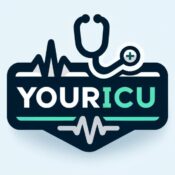1. Why Choose Anesthesia?
- Intellectually Stimulating: Requires quick decision-making and in-depth knowledge of medicine.
- Hands-On Specialty: Heavy use of procedures (intubation, regional blocks, central lines, etc.).
- Work-Life Balance: More predictable hours compared to surgical specialties.
- Diverse Career Options: ICU, pain management, perioperative medicine, academia, or private practice.
2. Preparing for Anesthesia Residency
a) Academic Foundation
- Master the Basics: Strong understanding of Relevant physiology, pharmacology, and pathology is crucial.
- Read Core Books:
- Miller’s Anesthesia,barash (Comprehensive but detailed)
- Morgan & Mikhail’s Clinical Anesthesiology(concise but all topics are not covered),Stoeltings co-exting disease (Concise and practical)
- oxford handbook (Good for quick revision)
- Use Online Resources:
- OpenAnesthesia,WFSA,NYSORA
- BJA(journal)
- for ICU-LIFTL,emcrit
- BEST STRATEGY-Don’t limit yourself to a single source—study each topic from whichever resource you find most comfortable and effective.
Your goal should be to complete topics not books.
b) Procedural Skills
- Familiarize yourself with intubation techniques, IV access, central lines, arterial lines, and regional anesthesia.
- Observe and assist in OT .
c) Mental Preparedness
- Anesthesia requires calmness under pressure. Develop resilience and adaptability.
- Be ready for high-stress situations like emergencies and difficult airways.
3. The First Few Months of Residency
a) Understanding the Workflow
- Learn the preoperative assessment(PAC).
- Get comfortable with monitoring equipment, ventilators, and infusion pumps.
b) Handling Emergencies
- Be prepared for airway emergencies like laryngospasm, aspiration, and failed intubation.
- Learn resuscitation protocols (ACLS, ATLS, PALS).
c) Time Management
- Early morning preparation: Arrive before your seniors, check your assigned cases, and set up your anesthesia workstation.
- End-of-day review: Reflect on cases, note key learning points, and revise concepts.
4. How to Study During Residency
- Follow a structured approach:
- PGY-1: Focus on Drugs, airway management, and monitoring.
- PGY-2: Dive into regional anesthesia, icu potocols, sytem wise reading.
- PGY-3: recent advances in anesthesia , last year questions , practicing for case based viva and exam preparation(revise).
- Use mnemonics and concept maps for quick recall.
- Practice MCQs from exams like FRCA, EDAIC, and DM/DrNB Anesthesia.
5. Balancing Residency with Life
- Work-life balance is key. Residency can be exhausting, but maintaining hobbies and physical fitness helps.
- Mental health matters: Don’t hesitate to talk to mentors or counselors if burnout occurs.
6. Career Prospects After Residency
- Fellowship options: Pain Medicine, Critical Care, Cardiac Anesthesia, Neuroanesthesia, Pediatric Anesthesia,Trauma anesthesia,Obstetrics Anesthesia,OncoAnesthesia,Emergency Medicine.
- Job options: Academia, private practice, hospital-based anesthesia, telemedicine, research.
Conclusion
Anesthesia residency is demanding but incredibly fulfilling. By staying curious, developing strong procedural skills, and maintaining a proactive learning attitude, you can thrive in this specialty.
Do you have any questions about anesthesia residency? Drop them in the comments below!
